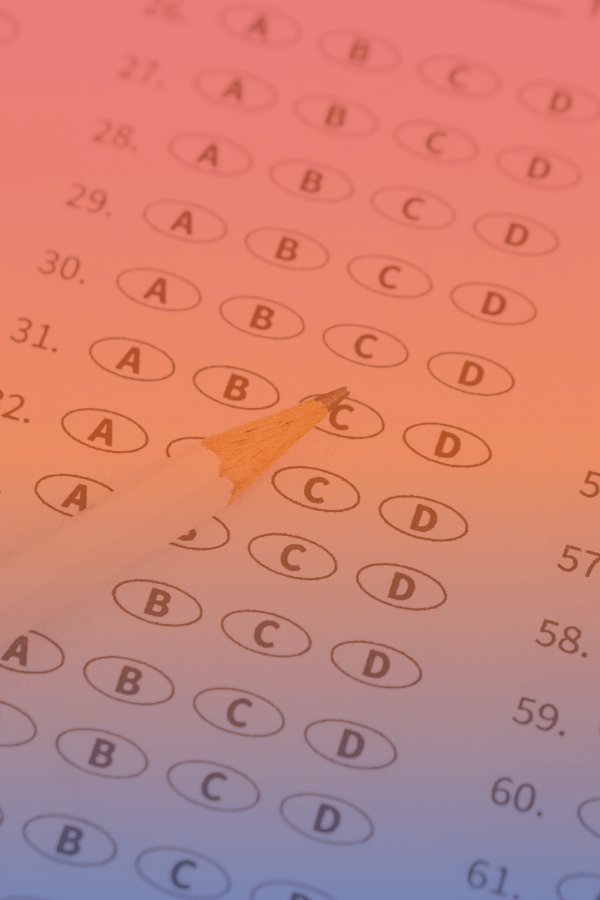Educational
How Does the Digital SAT Work? Everything You Need to Know
The landscape of college admissions is constantly evolving, and with it, the realm of standardized testing is shifting too—enter the Digital SAT. The new SAT is not just moving from paper to screen- it is a complete redesign that reflects the world you are entering. A world that’s digital, fast-paced, and driven by innovation.

What is the Digital SAT?
The Digital SAT is the culmination of years of feedback and research—a test that speaks to how you learn and interact with the world today. Forget about the piles of paper and the clutter of pencil shavings; the future is sleek, streamlined, and sustainable.
The College Board has ensured that this isn’t just a test—it’s an experience that aligns with your digital fluency. Crafted to be more relevant, with examples and content that feel familiar rather than foreign, the Digital SAT represents a leap toward testing that reflects real-world problem-solving and critical thinking.
Digital SAT Sections
While the heart of the SAT remains intact, the digital interface provides a dynamic new rhythm to the tasks ahead. You’ll find sections designed to test reading, writing, and math abilities, but with a twist—they harness technology to create a more personalized and adaptive experience. This means the difficulty adjusts to find your unique skill level, providing a fair and accurate measure of your potential.
You can expect shorter, more manageable reading passages with a greater variety of topics. The math questions are geared towards practical problems, assessing your aptitudes in a way that relates directly to scenarios you might encounter in further education and beyond.
What’s Different About the Digital SAT?
- Multistage Adaptive Testing: Both sections of the test are split in half. How you perform in the first half of the section will determine the difficulty and score weight for the questions in the second half. For example, if you score really well on the first half of the math section, the next set of questions will be harder but worth more.
- Shorter test: Instead of three hours, the digital test only lasts 2 hours and 14 minutes.
- Faster scores: You’ll receive your score a few days after the test, instead of weeks later.
- More security: If one test is compromised, it reduces the risk of having to cancel entire groups of tests.
- Calculators are allowed: You’re allowed to use a graphing calculator (either the provided digital one or your own) throughout the entire math section.
Read more about the specs of the digital SAT from College Board.
What Tools Are Included in the Digital SAT?
With the SAT going digital, it’s able to provide more tools and resources for students to use while testing. Here are a few examples, taken directly from College Board:
- Mark for review: Students can flag and return to any question within a given test module they want to come back to later.
- Testing timer: A clock counts down the time remaining in each module. Students can hide the timer, and they get an alert when 5 minutes remain in the module.
- Calculator: A built-in graphing calculator is available on the entire Math section. (Students can also bring their own approved calculator.)
- Reference sheet: On the Math section, students have access to a list of common formulas.
- Annotation: Students can highlight any part of a question and leave themselves a note.
How to Study for the Digital SAT
Studying for the Digital SAT calls for a blend of traditional methods and tech-savvy tactics. Enhance your approach with apps and online tools that help reinforce learning through repeated exposure and practice tests that mimic the digital format.
Develop a study plan that rotates through reading, writing, and math, using online resources that adapt to your learning curve, similar to the test itself. Familiarize yourself with the test’s functionality—practice scrolling through passages, using the on-screen calculator, and managing your time in a digital environment.
Take practice tests provided by College Board that use the same testing application to determine where you’re currently testing at and set goals for yourself. There are lots of books, online progreams, and other resources available to help you study and get the best score possible- we’ve listed out a few further down.
Remember, the content hasn’t changed; the core concepts remain steadfast. The digital format, though, encourages you to engage with these concepts in new and exciting ways, preparing you not just for the test, but for the digital-first world you’re about to enter.
Common Questions:
How will you take the Digital SAT?
Just like before, you’ll take the test either at school or at a testing center. You can use a wide range of devices like a laptop, iPad, Chromebook, and more, and will download the application before testing day.
What to bring to testing day?
On the day of your test, you need to bring your device and ID. We also recommend bringing a charger, paper and pencil, water, and a snack.
What if I don’t have a device?
Students can request to borrow a testing device from College Board when they register for the test.
How is the digital SAT scored?
The digital SAT is scored the same as before, with both sections being scored out of 800 and added up to your total score. The difference, however, is how the questions are weighted. Based on their difficulty, some questions may be worth more than others.
How long is the digital SAT?
You have 64 minutes to complete the Reading and Writing section and 70 minutes to complete the Math section. Each section is split between two equal-length modules- once you finish one module you won’t be able to return to the next. Between each section, you will receive a 10-minute break.
SAT Prep in San Diego
There are plenty of resources to help students prepare for the SAT, both in-person and online.
In-Person Prep
An amazing resource for students in San Diego is Admit One, put on by UCSD Extended Studies and San Diego Public Library and focusing on both the SAT and ACT. While this in-person, six week academy is free, make sure to sign up as soon as possible. Winter 2024 registration has already closed, but keep your eyes peeled for the next opportunity!
Online Prep
If going in-person isn’t for you, don’t worry! There are many free online options to help prep for the big test:
- College Board, the organization that created the SAT, offers lots of free study options to help prep.
- Khan Academy partners with College Board to provide in-depth digital SAT preparations.
Other Resources
It’s also a good idea to check within your community for help to prep. Older students may have books and study guides that they no longer need, local college students may offer tutoring services, and nearby schools (including high schools, community colleges, and universities) likely offer resources. It’s definitely worth the time to look around!
As we stand on the precipice of a future where technology intertwines with every facet of our lives, the Digital SAT is your rite of passage. This isn’t just a test; it’s an opportunity to showcase how ready you are for a world that champions those who are fluent in digital languages and capable of adapting with grace.
Students and future trailblazers, the Digital SAT is your platform to shine. It’s challenging, yes, but it’s also fair and attuned to who you are. It’s designed to draw out your very best, proving that you’re not just test-savvy, but future-ready.
Study with your eyes set firmly on the potential you hold within—an infinite well of possibility that, once tapped, may hold the solutions, innovations, and advancements our world desperately needs. Because after all, this isn’t just about acing a test—it’s about preparing to enrich the world with your talents, one digital stride at a time.
Now take a breath, dive in, and let’s conquer the Digital SAT together. The future is bright, and it’s waiting for your mark.
